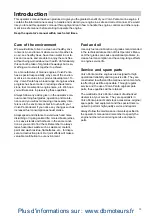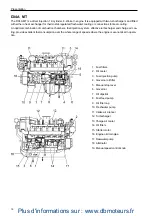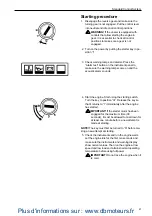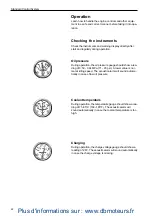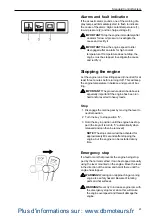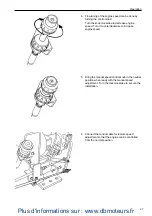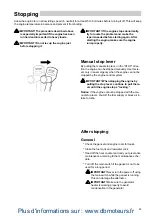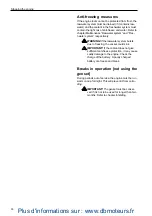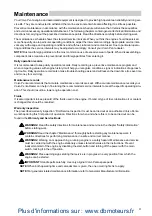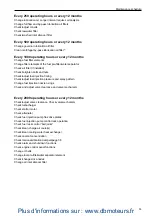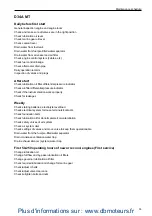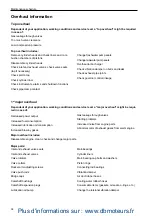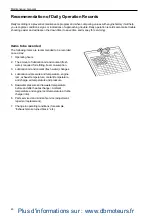
25
Operation
Manoeuvring
The marine gear must be engaged at low idling speed.
There must be a brief pause after engaging gear befo-
re increasing the engine speed. Wait for approximately
two seconds to ensure that the gear clutch has enga-
ged properly.
IMPORTANT! If the vessel is equipped with two
engines equipped with wed exhaust systems,
they must both be running while in reverse or
there will be a risk of water entering the engine
(through the exhaust passage).
Pulling away
1. Move the lever from neutral to the engagement
position for the desired direction of travel.
2. Apply load accordingly.
Forward–Reverse
1. Slow the engine speed to idling and allow the ves-
sel to loose most of its speed.
2. Move the lever to neutral.
3. Move the lever to reverse. Wait for approximately
two seconds and then increase the engine speed
gradually.
IMPORTANT! A direct forward–reverse maneuver
can damage the marine gear and engine. It is
therefore always necessary to stop with the lever
in neutral for a few seconds and allow the vessel
to loose most of its speed before engaging. If the
speed of the vessel is too high, there is a risk of
the propeller windmilling which might cause the
engine to stop and start rotating in the wrong
direction. This may cause serious engine
damage.
Applying load
When the engine has reached operation temperature,
bring the engine to operating speed and apply the load
gradually.
During load operation make sure that:
1. No engine related alarms occur.
2. There are no visible leaks of fuel, lube oil, coolant
or exhaust gas
3. No abnormal noise or vibrations occur.
4. The color of the exhaust gas is normal.
5. The breather mist is of normal quantity and color.
6. Instrument readings are the normal.*
*Oil pressure: 0,49 to 0,64 Mpa (71 to 92 psi) (at
rated speed)
*Coolant temperature: 71 to 85°C (165 to 185 °F)
Running in
The engine must be “run in” during the first 10
hours of operation as follows:
Run the engine under normal operation. Do not run it
at full power except for short periods. Never run the
engine for long periods at constant rpm during this
time. A high consumption of lubricant is normal during
the running in period. Therefore, check the oil level
more often than recommended. The prescribed war-
ranty inspection “First Service Inspection” must be
carried out during this first period of operation. For
more information: See Warranty and Service Book.
Forced propeller rotation
When the vessel is towed or anchoring in strong cur-
rents, the propeller can make the propeller shaft rotate
even though the engine is stationary. This may dama-
ge the marine gear.
Plus d'informations sur : www.dbmoteurs.fr



